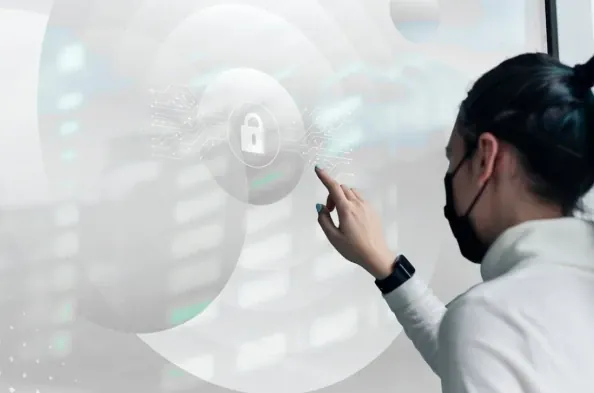The cybersecurity landscape has encountered a new challenge as the Tycoon 2FA phishing kit has evolved, employing sophisticated evasion techniques to bypass modern endpoint detection systems. Identified by Trustwave’s cybersecurity researchers, this advanced phishing kit utilizes highly deceptive tactics, complicating detection and analysis, and presenting an increased threat to overall security structures.
Emergence of Complex Evasion Techniques
Custom CAPTCHA and JavaScript Obfuscation
The Tycoon 2FA phishing kit has introduced several advanced methods to avoid detection. One noteworthy method is the implementation of custom CAPTCHA using HTML5 canvas. This technique creates dynamic and unique visual challenges that are both user-friendly and highly resistant to pattern recognition algorithms typically employed by anti-phishing systems. The CAPTCHA effectively separates legitimate users from automated bots, ensuring that the phishing operation remains undetected for longer.
Additionally, JavaScript obfuscation using invisible Unicode characters presents a considerable challenge for traditional security tools. This technique obscures the malicious intent of the code by embedding invisible characters within the script. Standard pattern-matching and string-search mechanisms find it difficult to identify such obfuscated code, allowing the phishing campaign to operate stealthily. The incorporation of these invisibility tactics means that even detailed human inspections may overlook the hidden payload, thus enhancing the campaign’s success.
Invisible Unicode Characters Encoding
Among the several obfuscation techniques, the use of invisible Unicode characters encoding stands out as particularly innovative. The Tycoon 2FA phishing kit cleverly employs specific characters such as Halfwidth Hangul Filler and Hangul Filler to represent binary data. During runtime, these invisible characters are decoded with the help of JavaScript Proxy objects. This sophisticated encoding method renders the malicious payload invisible to human inspectors, significantly complicating the detection efforts and making the attack more effective.
These Unicode evasion techniques prove extremely resilient against contemporary security solutions, requiring a reassessment of current threat detection methodologies. The traditional signature-based detection systems struggle to identify such intricately concealed threats, emphasizing the need for more advanced and adaptive security measures. The rise of these innovations in phishing kits underlines the increased sophistication and ambition of cybercriminals.
Enhancing Security and Detection
Behavioral-Based Monitoring and Browser Sandboxing
Given the advanced evasion techniques employed by the Tycoon 2FA phishing kit, traditional security measures are less effective. Behavioral-based monitoring can offer an enhanced layer of security by focusing on suspicious actions and patterns of software behavior, rather than relying exclusively on known threat signatures. This approach can help in identifying anomalies that are indicative of a phishing attempt, providing a more dynamic and responsive security posture.
Further, enhanced browser sandboxing offers another line of defense. By isolating the execution of web content in a controlled environment, sandboxing can limit the potential damage of malicious code. Even if malicious JavaScript manages to evade detection and runs successfully, the sandbox prevents it from interacting with the host system, thereby neutralizing the threat. This containment strategy is crucial in mitigating the impact of evasion techniques utilized by sophisticated phishing kits.
Developing Advanced Detection Rules
Trustwave’s SpiderLabs team has responded to these challenges by developing a YARA detection rule specifically targeting the patterns of Unicode obfuscation. YARA rules allow for the identification of malware based on specific characteristics, facilitating the detection of new and modified threats with similar traits. This targeted approach makes it possible to flag potential phishing activity more efficiently.
The development and continuous updating of these advanced rules are vital in keeping pace with the evolving nature of phishing techniques. Security frameworks must adapt to the advancements in evasion tactics to ensure that cybersecurity measures remain robust and effective against increasingly sophisticated threats.
Future Considerations in Cybersecurity
Adapting to Evolving Threats
The evolution of the Tycoon 2FA phishing kit highlights the relentless progression of phishing tactics and the continuous need for innovative cybersecurity measures. As cybercriminals develop more sophisticated methods to bypass security systems, the cybersecurity industry must adopt a proactive stance, investing in research, and developing advanced solutions to counter emerging threats. This proactive approach involves regularly updating security algorithms, enhancing threat intelligence capabilities, and fostering collaboration between cybersecurity entities.
Implementing Comprehensive Security Strategies
The cybersecurity landscape has encountered a new challenge as the Tycoon 2FA phishing kit has evolved, utilizing sophisticated evasion techniques to bypass modern endpoint detection systems. Discovered by Trustwave’s cybersecurity researchers, this advanced phishing kit incorporates highly deceptive tactics, significantly complicating the detection and analysis processes, and presenting an increased threat to overall security infrastructures. The Tycoon 2FA phishing kit’s evolution represents a notable escalation in phishing strategies, employing advanced methods that make it vastly more difficult for security systems to identify and neutralize. This toolkit takes advantage of two-factor authentication systems, which are typically seen as robust security measures, adding an additional layer of complexity for security experts. By mimicking legitimate login interfaces and employing intricate evasion techniques, this phishing kit elevates the potential risks and threats, making it an urgent issue that demands attention and advanced countermeasures within cybersecurity frameworks.






